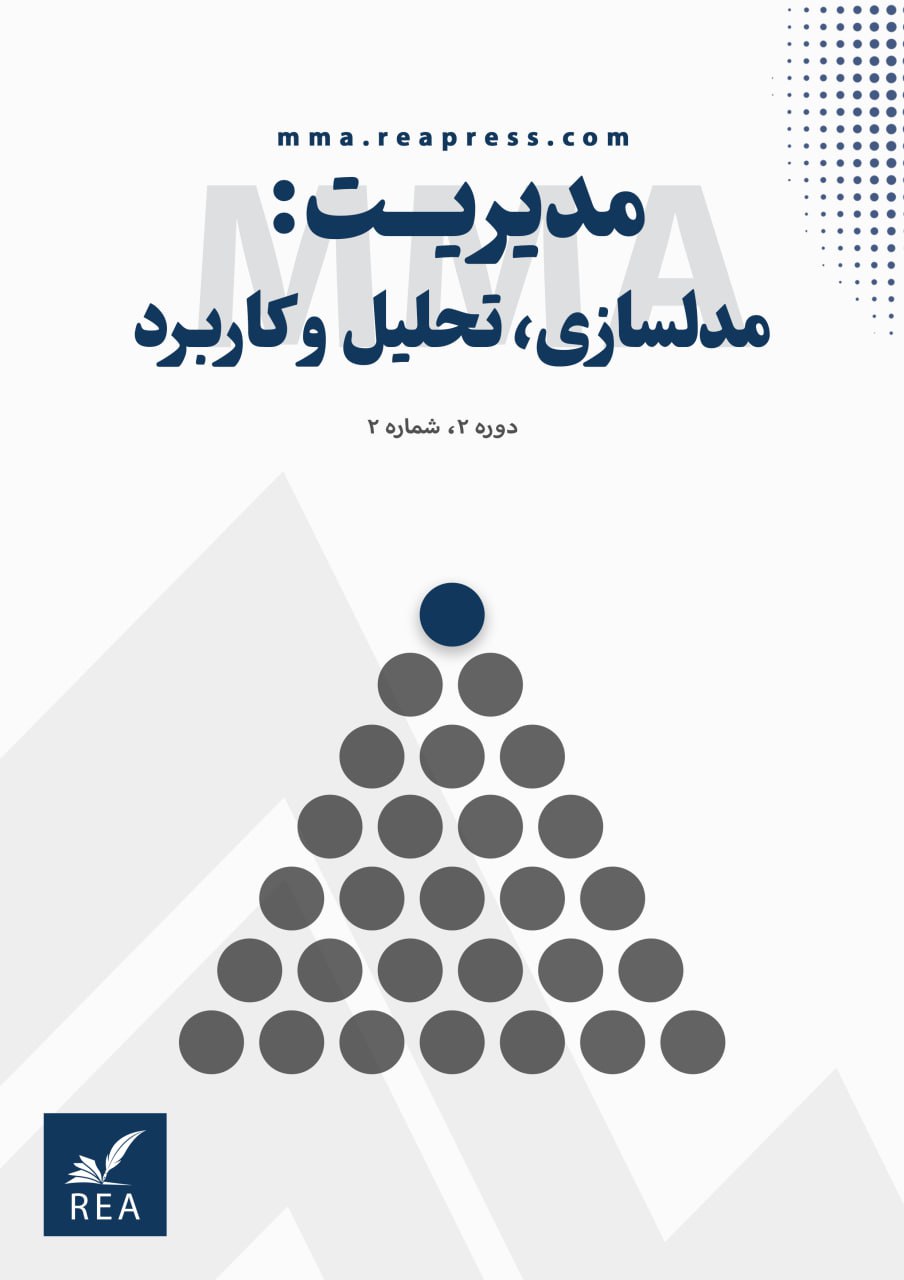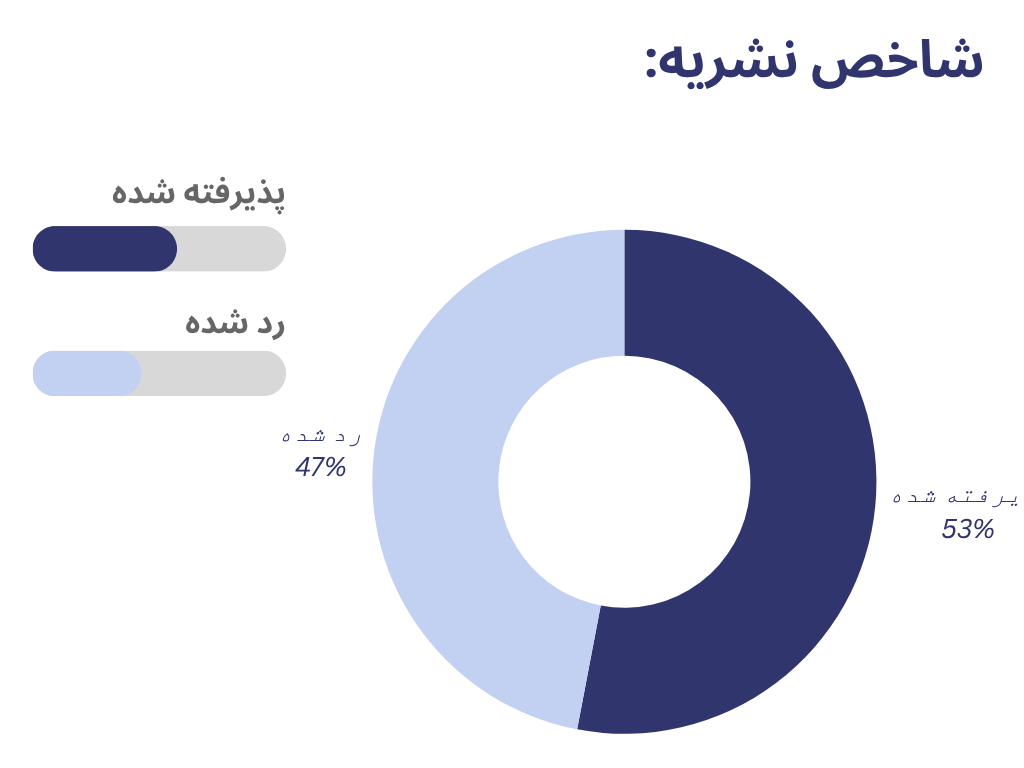شناسایی و رتبهبندی استراتژیهای بهبود قابلیت مدیریت ارتباط با مشتری (CRM) با رویکردهای SOWT-FUZZY TOPSIS-VIKOR
چکیده
هدف: هدف پژوهش حاضر شناسایی و رتبهبندی استراتژیهای بهبود قابلیت مدیریت ارتباط با مشتری با بهرهگیری از رویکردهای تحلیلی SWOT، تاپسیس فازی و ویکور فازی است تا بتوان الگویی کاربردی برای ارتقای عملکرد CRM در سازمانها ارایه داد.
روششناسی پژوهش: این تحقیق از نظر هدف کاربردی و از لحاظ روش، توصیفی–پیمایشی است. جامعه آماری شامل ۲۵ نفر از مدیران و کارشناسان حوزه فروش، بازاریابی و CRM است که به روش هدفمند انتخاب شدند. گردآوری دادهها از طریق پرسشنامه مقایسات زوجی و مصاحبه انجام گرفت. روایی ابزار با نظر خبرگان و پایایی آن از طریق نرخ ناسازگاری ساعتی تایید شد. دادهها با استفاده از روشهایSWOT، تاپسیس فازی و ویکور فازی تحلیل گردید.
یافتهها: نتایج تاپسیس فازی نشان داد که «آموزش نیروی انسانی متخصص در حوزهCRM »، «افزایش تعامل با شرکتهای مشاورهای متخصص» و «تخصیص منابع مالی مناسب» بهترتیب در رتبههای اول تا سوم قرار دارند. همچنین نتایج ویکور فازی نیز اولویت مشابهی را تایید کرد.
اصالت/ارزش افزوده علمی: این پژوهش با تلفیق سه رویکرد تصمیمگیری چندمعیاره فازی، چارچوبی بومی برای شناسایی استراتژیهای بهبود CRM ارایه میدهد که میتواند به تصمیمگیرندگان در تخصیص منابع، توسعه سرمایه انسانی و افزایش اثربخشی روابط مشتریمحور کمک کند.
کلمات کلیدی:
استراتژی، مشتری، ارتباط با مشتریان، بازاریابیمراجع
- [1] Machado, M., Oliveira, J., & de Souza, J. M. (2008). A methodology for scientific customer relationship management. Computer supported cooperative work in design IV (pp. 396–407). Springer Berlin Heidelberg. https://doi.org/10.1007/978-3-540-92719-8_36
- [2] Noori Khan Nivardi, M., Bashiri, M., & Dosti, M. (2020). Structural model of customer churn from sports stores. Sports management studies, 12(60), 169-192. (In Persian). https://doi.org/10.22089/smrj.2019.6399.2306
- [3] Habibi, A., & Rahmani, P. (2013). An essay on the concept of customer relationship management. (In Persian). Northern Strategy. https://B2n.ir/jt2407
- [4] Elahi, S., & Heydari, B. (2022). Customer relationship management. (In Persian). Commercial printing and publishing. https://B2n.ir/et7705
- [5] Kumar, V., & Reinartz, W. (2018). Customer relationship management concept, strategy, and tools. Springer. https://doi.org/10.1007/978-3-662-55381-7
- [6] Plakoyiannaki, E., & Tzokas, N. (2002). Customer relationship management: A capabilities portfolio perspective. The journal of database marketing, 9(3), 228–237. https://doi.org/10.1057/palgrave.jdm.3240004
- [7] Ling, R. R., & Yen, D. C. C. (2001). Customer relationship management: An analysis framework and implementation strategies. Journal of computer information systems, 41, 82–97. https://doi.org/10.1080/08874417.2001.11647013
- [8] Nayebasl, S. R. (2020). Providing an optimal model of customer relationship management in Keshavarzi Bank with the approach of improving the financial situation and profitability using hierarchical analysis technique. Journal of accounting and management vision, 3(25), 33-45. (In Persian). https://www.jamv.ir/article_108303.html
- [9] Ali Akbari, E. (2019). Identifying and prioritizing factors affecting customer relationship management (CRM) in order to improve the quality of customer relationships (Case study: Saderat bank branches in Khuzestan province). The fourth national conference on business and commerce management. (In Persian). Tehran, Iran, Civilica. https://civilica.com/doc/926071
- [10] Mehrmanesh, H., & Safavi Mir Mahalle, S. M. (2020). Designing a success model for customer relationship management in Iranian organizations with an interpretive-structural approach (Case study: Ardabil Province Gas Company). Scientific journal of business strategies, 14(10), 141-159. (In Persian). https://doi.org/10.22070/14.10.141
- [11] Hashemi Moghadam, A. A. (2016). Investigating the improvement and development of the crm system based on the capabilities of using information technology and the e-business environment. The first international conference on new paradigms of business and organizational intelligence management. (In Persian). Tehran, Iran, Civilica. https://civilica.com/doc/500135
- [12] Nabavi, S. N., Ayat, M., & Sharifi, M. (2015). Identifying and evaluating key success factors in implementing a customer relationship management system (Case study: Chaharmahal and Bakhtiari Province Gas Company). Monthly journal of management and accounting research, 24(2), 23-43. (In Persian). https://B2n.ir/gy9842
- [13] Veisi, H., & Gharvi, E. (2015). A data mining-based approach to customer relationship management and marketing. Consumer behavior studies, 2(2), 25-44. (In Persian). https://cbs.uok.ac.ir/article_7657.html?lang=fa
- [14] Haghighat Monfared, J., & Sarai Nia, E. (2011). Developing a customer relationship management system strategy with a balanced scorecard approach in Sapco Company. Marketing management, 6(10), 119-144. (In Persian). https://www.noormags.ir/view/fa/articlepage/1051877/
- [15] Hamadi, K. (2021). Factors for success in customer relationship management (CRM) systems. World academics journal of engineering sciences, 19(1), 16–20. https://www.researchgate.net/publication/350530033
- [16] Ocker, R. J., & Mudambi, S. (2003). Assessing the readiness of firms for CRM: A literature review and research model. 36th annual hawaii international conference on system sciences (pp. 10). IEEE. https://doi.org/10.1109/HICSS.2003.1174390
- [17] Guerola-Navarro, V., Oltra-Badenes, R., Gil-Gomez, H., & Iturricha Fernández, A. (2021). Customer relationship management (CRM) and Innovation: A qualitative comparative analysis (QCA) in the search for improvements on the firm performance in winery sector. Technological forecasting and social change, 169, 120838. https://doi.org/10.1016/j.techfore.2021.120838
- [18] Ponisciakova, O. (2021). Modern marketing tools in the condition of globalization. The 20th international scientific conference globalization and its socio-economic consequences 2020. SHS Web of Conferences. https://doi.org/10.1051/shsconf/20219202053
- [19] Payne, A., & Frow, P. (2006). Customer relationship management: From strategy to implementation. Journal of marketing management, 22(1), 135–168. https://doi.org/10.1362/026725706776022272
- [20] Ionascu, A. (2016). Social media – a strategy in developing customer relationship management. Procedia economics and finance, 39, 785–790. https://doi.org/10.1016/S2212-5671(16)30266-0
- [21] Griffey, S., Piccinino, L., Gallivan, J., Lotenberg, L. D., & Tuncer, D. (2015). Applying national survey results for strategic planning and program improvement: The national diabetes education program. Evaluation and program planning, 48, 83–89. https://doi.org/10.1016/j.evalprogplan.2014.10.002
- [22] Handzic, M., Ozlen, K., & Durmic, N. (2014). Improving customer relationship management through business intelligence. Journal of information & knowledge management, 13(02), 1450015. https://doi.org/10.1142/S0219649214500154
- [23] Hatami-Marbini, A., Tavana, M., Hajipour, V., Kangi, F., & Kazemi, A. (2013). An extended compromise ratio method for fuzzy group multi-attribute decision making with SWOT analysis. Applied soft computing, 13(8), 3459–3472. https://doi.org/10.1016/j.asoc.2013.04.016
- [24] Lehmann, D. R., Zahay, D., & Peltier, J. W. (2013). Survey analyze customer relationship management using balanced scorecard. Journal of interactive marketing, 27(1), 1–16. https://B2n.ir/df3597
- [25] Salojärvi, H., Sainio, L. M., & Tarkiainen, A. (2010). Organizational factors enhancing customer knowledge utilization in the management of key account relationships. Industrial marketing management, 39(8), 1395–1402. https://doi.org/10.1016/j.indmarman.2010.04.005
- [26] Saaty, T. L. (1990). How to make a decision: The analytic hierarchy process. European journal of operational research, 48(1), 9–26. https://doi.org/10.1016/0377-2217(90)90057-I







